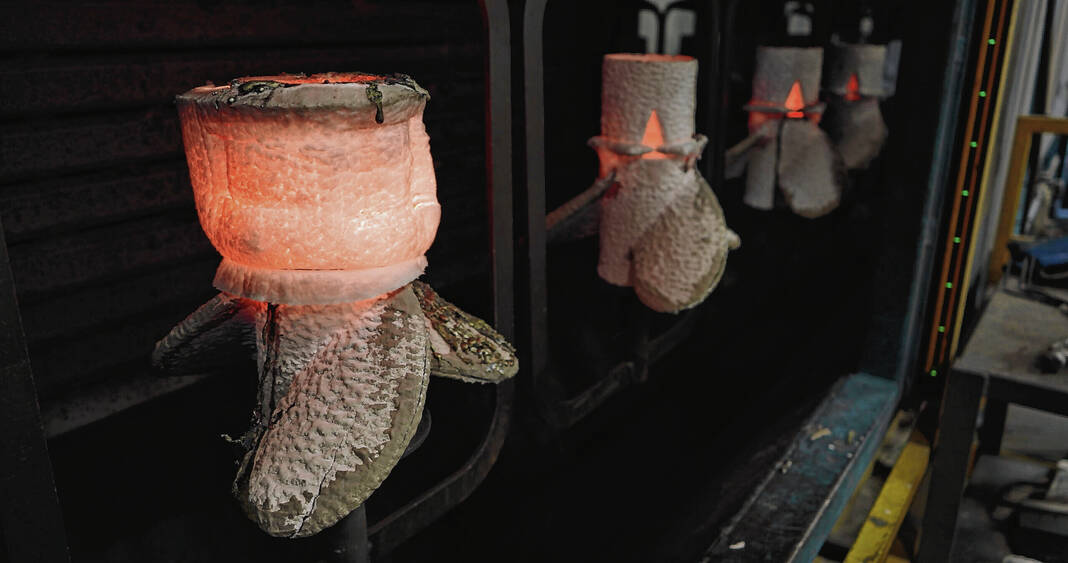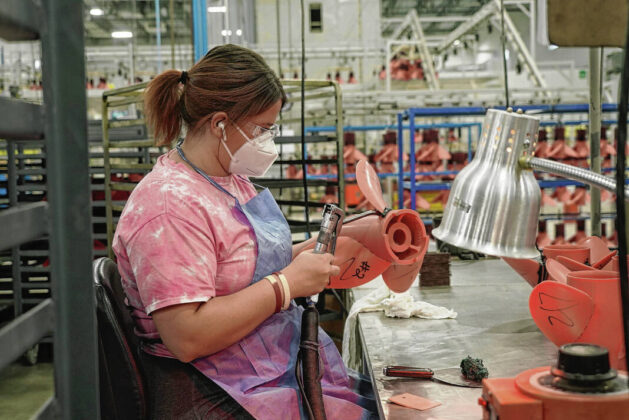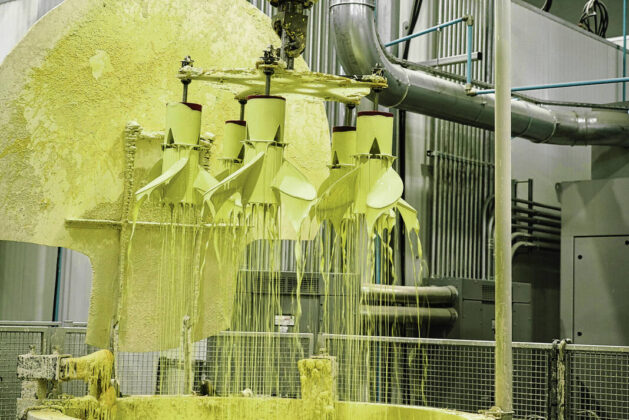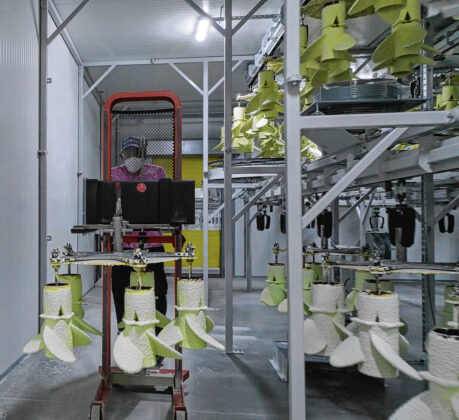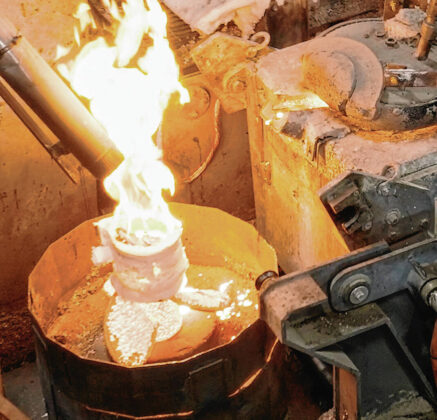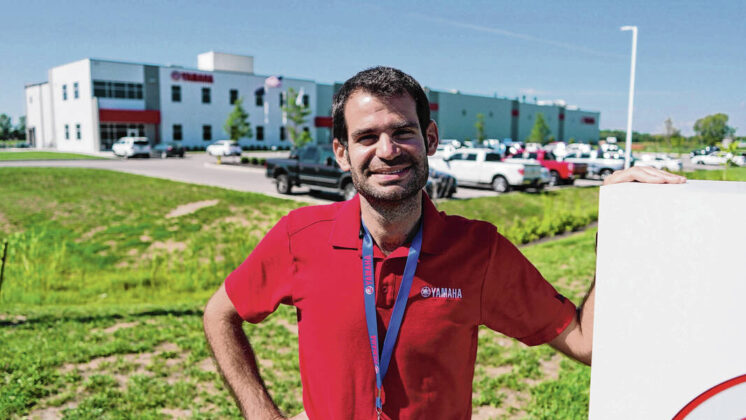GREENFIELD – Blazing orange molten steel flowed down a chute and into a gritty cylinder with blades swooping off its sides.
The liquid metal crept into every opening of the shell to form the desired shape. Eventually the resulting device will affix to a boat engine, where its blades will slice through water and thrust the craft forward.
It was another day at Yamaha Marine Precision Propellers, Inc. in Greenfield, which reports success in its first 18 months and already has plans to expand.
Production began in March 2021 in the 55,000-square-foot plant at 1887 W. New Road, where the company moved the first steps of its propeller process from its facility in Indianapolis.
Batuhan Ak, general manager of the facility in Greenfield, said a key component of transitioning from Indianapolis was automation. He acknowledged that a common reaction to automation is the notion that it decreases jobs.
“That was not the purpose of our facility here,” said Ak, who has been with the company for over seven years and started as an intern before moving into an engineering role. “Our purpose of our facility was to build our biggest asset, which is our people. We wanted to leverage automation as demand goes up to increase capacity to meet that demand. And so we automated a lot of difficult functions within the facility.”
Ak described the amount of automation there as atypical for a facility its size.
“Most foundries at this level of automation are usually significantly larger footprint-wise,” he said.
Before the partial move to Greenfield, Yamaha Marine Precision Propellers employed 150 and now has over 200 between the two locations. Both facilities operate five days a week, 24 hours a day.
The Greenfield plant uses investment casting, a process that, at its fundamental level, is about 5,000 years old.
Employees start by assembling a wax pattern of a propeller, with much of the work done by hand. Multiple ceramic materials are then applied to the pattern to make a shell capable of withstanding the high temperatures of the furnace-heated molten steel to follow after the wax is removed. The shell is then removed, leaving the nearly completed steel propeller.
Propellers ship every day from Greenfield to Yamaha’s Indianapolis location, where they’re completed. Depending on the product, the process takes a week and a half to three weeks from start to finish.
Ak said Yamaha Marine Precision Propellers makes 25 to 30 different kinds of boat propellers, produces over 60,000 a year and is designed for a minimum annual output capacity of about 100,000.
He added in the next two to three years, the company hopes to expand its Greenfield facility southward, doubling its size and bringing its Indianapolis operation there too.

